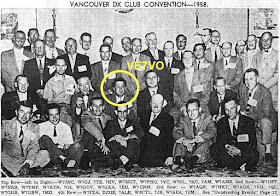The Rookie Roundup
The Rookie Roundup is a contest for amateurs that have received their license within the last 3 years. (2015/14/13) There are different modes at several times of year April = SSB (Phone), August = RTTY and December = CW.I qualified as a rookie since I was recently licensed and was interested in this contest. After speaking with Brett VE7GM about the Rookie Roundup Contest he said the contesting calendar was slowing down a bit prior to field day but he thought this might be a good chance for me to get some experience.
John VA7XB opened his station for this event and got me setup on N1MM logging software and the layout of his station and equipment. I had previously monitored along with the operators at John’s QTH during the BC QSO party. Also I had participated briefly on some other contests from my own home so I had some idea of what to expect but had never run assisted mode myself. That’s where the non-rookies really help out, and I was especially lucky to have experienced contesters showing me the ropes.
 |
| Jeremy VE7TMY |
Contacts were tough going and then Brett arrived about the time we switched to 20 meters. Sheldon VA7XNL was heard over me on QRP. I thought I was being called by the station but they heard VA7 not VE7. What are the odds on that happening?
I had QSOs from all over the US so even with QRP and on a good antenna system I could be heard. The idea was that if they could hear me running QRP and responded to my CQ then QSOs would be possible. The main concerns were that search and pounce was more difficult on QRP and in run mode other stations setup near me might not have heard me running. I did have to repeat myself a few times and switch phonetics slightly to be heard accurately.
Sheldon VA7XNL contacted me while I was running and gave me another multiplier. Thanks Sheldon for my only contact in BC! It was still moderately slow going and there was a fair bit of QRM around. The last hour of the contest we switched to 100 watts and I got busy in run mode very near the contest recommended frequency (14.250mhz). I think many US stations wanted to contact me as I may have been an easy multiplier for them.
After the contest ended I calculated my score by counting my rookie and non-rookie QSOs. Rookies are worth 2 points and
Multipliers were given for each unique state and province, and as luck had it I ended up with nearly 50/50 mix of rookie/non-rookies. I also had a very high number of unique states/provinces worked (37) to multiply my score so I ended up with top rookie score in Canada.
I learned lots of tips with regard to contest etiquette and best practices from both John and Brett. I thank them both again for a great day of radio sport. I would highly recommend this contest be put on the calendar for next year’s rookies, and don’t forget the RTTY and CW modes later this year. This contest gave me some confidence I didn’t have before that I could operate a contest station. I still have much more work to do on my own QTH but look forward to more contesting.
More information at URL: http://www.arrl.org/rookie-roundup/
~ Jeremy VE7TMY




















